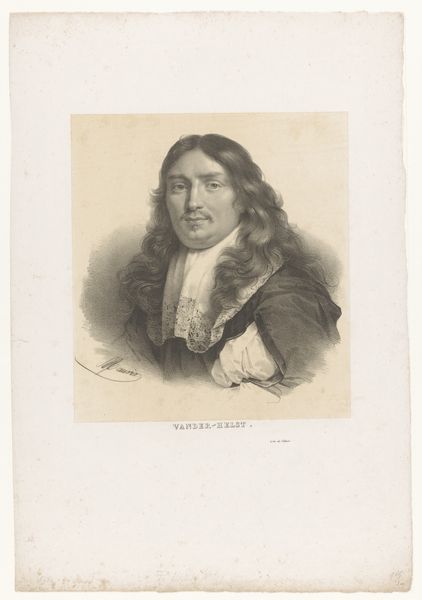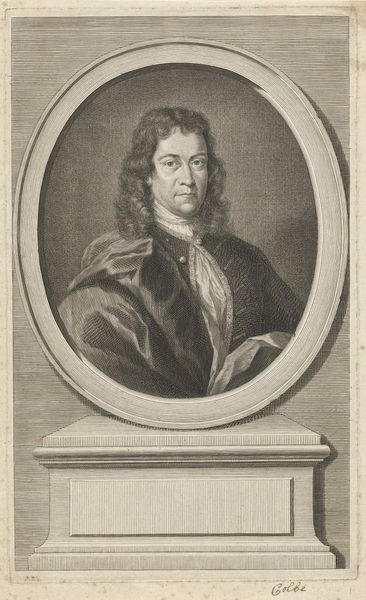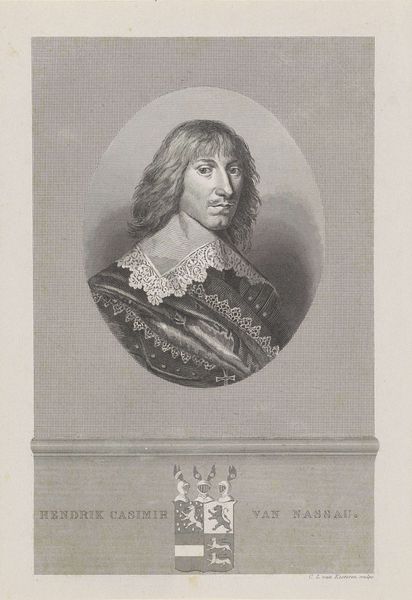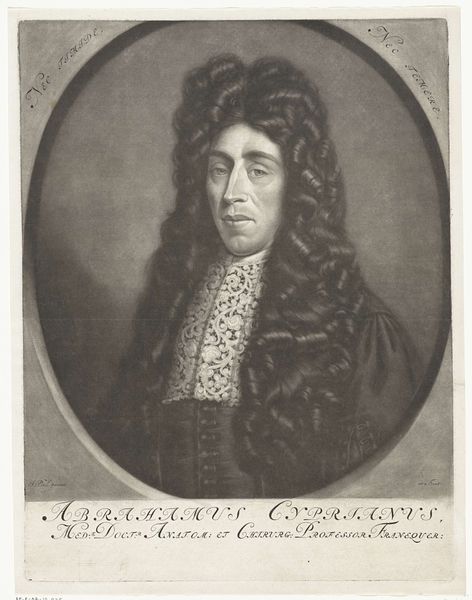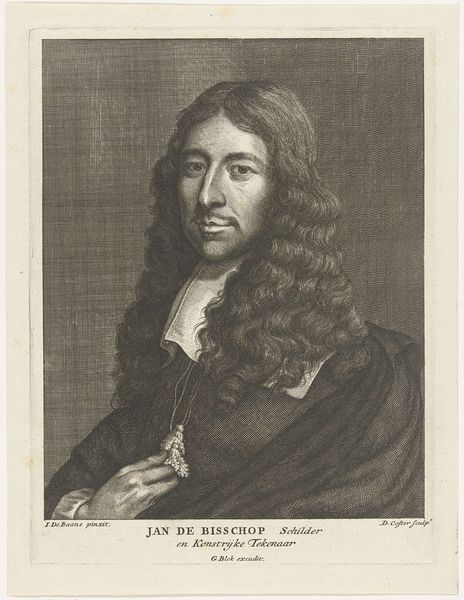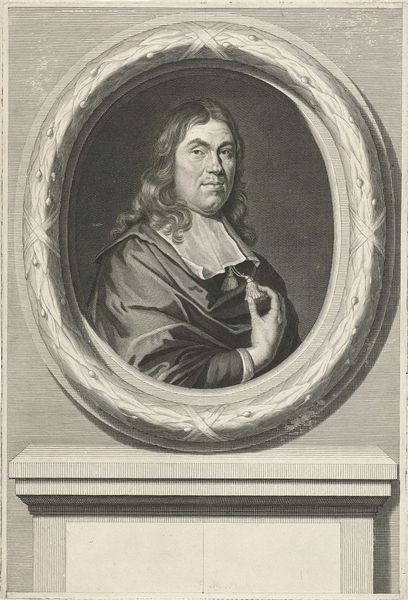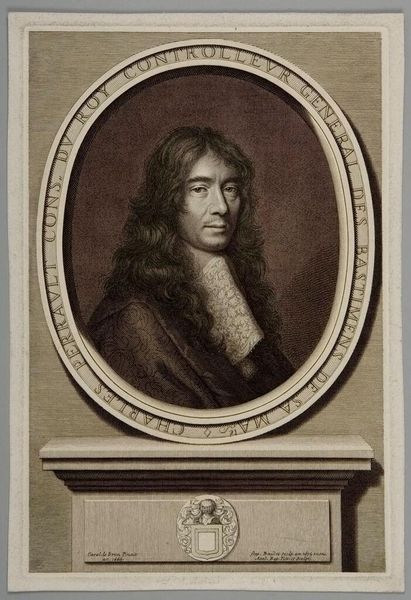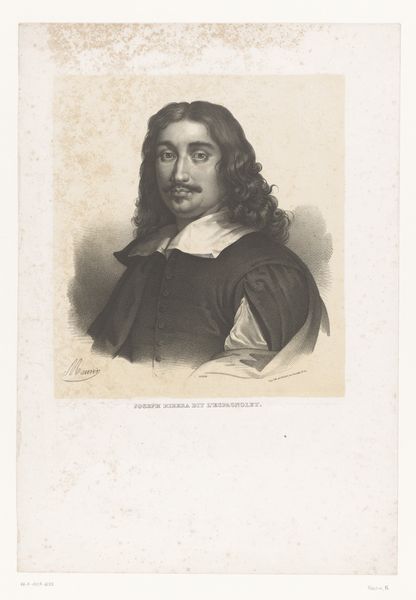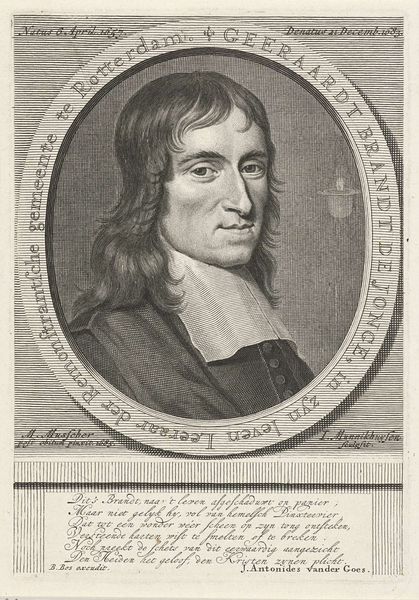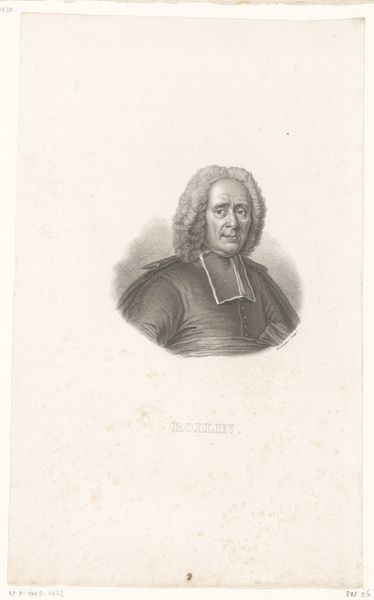
drawing, graphite, engraving
#
portrait
#
pencil drawn
#
drawing
#
light pencil work
#
pencil sketch
#
old engraving style
#
pencil drawing
#
graphite
#
pencil work
#
academic-art
#
engraving
Dimensions: height 238 mm, width 176 mm
Copyright: Rijks Museum: Open Domain
Editor: This is a portrait of Anthonie van Aesswijn by Hendrik Anthony Frederik Agathus Gobius, created in 1852 using graphite and engraving techniques. It feels incredibly formal, almost a little stiff, don't you think? What’s your take on this portrait? Curator: Well, "stiff" is one way to put it, but I see a carefully constructed image, reflecting the sitter's social standing. I’m curious about his gaze - there is an introspective feel. Look at the detailed lace collar – a symbol of wealth, right? It whispers stories of prosperity and trade. The way the light catches his face seems intentional. Does the old engraving style evoke nostalgia, or does it feel too detached for you? Editor: I can see the social standing you mean. It just feels… distant. The details are incredible, I admit, especially the rendering of the hair and the collar, and his expression seems slightly sad. How do you think people at the time reacted to the old engraving style, and why choose this media? Curator: That’s an excellent question. The detailed precision aligned perfectly with the 19th-century ideals. The detailed precision echoed the emerging scientific advancements. Engravings and graphite offered a cost-effective method for wider distribution, allowing this type of people of stature to solidify the family or self image. Do you find this medium successful, in portraying the true “Anthonie”? Editor: Hmmm. Well, I guess the details add authenticity, especially given that it’s a commissioned piece to communicate wealth. Curator: Exactly! These works acted as powerful signifiers. And this pushes us beyond seeing it merely as a portrait to viewing it as a social document. Editor: I never thought about that! Thanks to this, the piece has taken on a whole new life. Curator: Absolutely, sometimes, we must look at these images as mirrors reflecting entire historical periods!
Comments
No comments
Be the first to comment and join the conversation on the ultimate creative platform.
